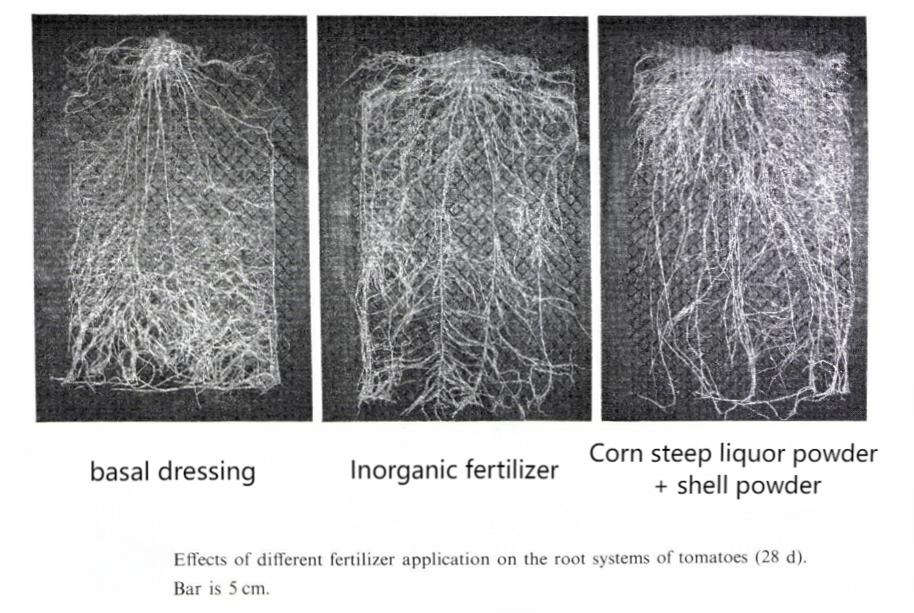Trustworthy Supplier




Biological characteristics of corn
Release time:
2020-10-19
The stalk of corn is upright, usually unbranched, 1~2.5 meters high, and each node at the base has aerial prop roots and a fibrous root system. In addition to the radicle, the node roots grow from the
1 Biological characteristics of corn
The stalk of corn is upright, usually unbranched, 1~2.5 meters high, and each node at the base has aerial prop roots and a fibrous root system. In addition to the radicle, the node roots grow from the stem nodes. The stem is 2~4cm in diameter and 0.5~4cm in height. The stem has nodes and internodes, and the stem is full of pith. The whole corn plant generally has 15-22 leaves, and the leaf body is wide and long. The leaf sheath has transverse veins, the leaf tongue is membranous, about 2mm long, thin and short, the leaf blades are flat and wide, linear-lanceolate, the base is round and ear-shaped, glabrous or pilose, and the midvein is thick. The caryopsis are spherical or oblate, and the glumes and palea are exposed after maturation. Their size varies with different growth conditions. Monoecious plants with different flowers, flowers and fruits in autumn. Maize female flower spikelets develop into two rows of grains after being paired in rows. The ears of corn are wrapped by layers of abnormal leaves, called foreskin. Therefore, the number of columns of corn is generally an even number of columns.
The whole growth period of corn is divided into the main development periods such as sowing, emergence, three leaves, seven leaves, jointing, tasseling, flowering, filling, milking, and maturity. Maize growth is divided into three stages: seedling stage, ear stage and grain stage. Maize is a thermophilic and short-day plant, and requires higher temperatures throughout its growth period. Because of its high plant and large leaf area, it needs a lot of water. Corn is not strict to the soil, and the pH value can be grown in the range of 6-8.
2 classification of corn varieties
(1) According to starch properties: hard grain type, most of which are horneous endosperm, only the center of endosperm is powdery endosperm;
Horse tooth type, the two sides of the grain are horny endosperm and the middle and top endosperm are powdery type. When mature, the top of the grain is concave and looks like a horse tooth;
Waxy type, also known as waxy type, the endosperm is entirely composed of keratinous starch, and the grains are opaque and dull, such as waxy;
Sweet type, also called sweet corn, most of the kernel endosperm is keratin starch;
The silty type, the endosperm is composed of silty starch, only a small amount of keratin starch in the outer layer;
Sweet powder type, the upper part of the grain is horny endosperm, which contains more tangy starch, and the lower part is powdery endosperm, which has less production value;
Burst type, mostly horny endosperm, only a small amount of starchy starch in the center.
(2) Classification by purpose: According to the composition of the grain and the special purpose, corn can be divided into two categories: special corn and ordinary corn.
Special corn generally refers to high-lysine corn, waxy corn, sweet corn, popcorn, high-oil corn, etc. Corn types other than special corn are ordinary corn.
(3) Classified by harvest season:
Early maturing seeds: the growth period of spring sowing is 70~100 days, and the growth period of summer sowing is 70~85 days;
Medium maturity seeds: spring sowing period of 100-120 days, summer sowing period of 85-95 days;
Late maturing seeds: the growth period of spring sowing is 120~150 days, and the growth period of summer sowing is more than 95 days.
In addition, according to the sowing season, it can be divided into spring corn, summer corn and autumn corn. There are winter corn in southern Guangdong and Hainan.
Blogs
Specifically, when the culture medium contained 5 g/L Corn Steep Liquor Liquid and 7.6 g/L sodium glutamate, the absorbance of the red pigment reached 20.7 U, compared to only 12.4 U in the control. This indicates that the addition of Corn Steep Extract significantly increased red pigment production.
Benefits of Adding Corn Steep Liquor Powder to Feed Fermentation
Adding corn steep liquor powder to feed fermentation can positively impact the fermentation process and final results in multiple ways, including nutritional supplementation, fermentation efficiency, and cost control.
Organic farm: Corn Steep Liquor Powder are promoters of tomato seedling growth
Corn steep liquor dry powder has a balanced ratio of NPK 7-7-7 and is 100% soluble in water. It is rich in up to 60% organic matter, which can transport a large amount of carbon source to the soil and effectively improve the physical and chemical properties of the soil. The protein content of Corn Steep Powder is not less than 42%, and the total amino acid content is not less than 35%. These nutrients can be directly absorbed and utilized by crops, providing sufficient nitrogen source guarantee for the growth of tomatoes.
Corn steep liquor powder has a cost advantage and more comprehensive nutrition than amino acid powder. The two can form a synergistic effect in the application of agricultural fertilizers through nutritional complementarity, fertilizer efficiency enhancement and cost optimization, which can achieve the improvement of fertilization effect and optimization of economic benefits.
Corn Steep Liquor Powder: The "Nutritional Engine" in Industrial Fermentation
In the fields of bio-pharmaceuticals, amino acid production, and enzyme preparation production within industrial fermentation, the quality of fermentation media raw materials directly impacts the production efficiency and product quality of microbial fermentation. As a practitioner in the industrial fermentation sector, are you searching for a high-quality fermentation raw material that can enhance production efficiency, reduce costs, and improve product quality? Corn Steep Liquor (CSL) powder is your optimal choice.
Corn Steep Liquor Powder: A New Choice for Organic Agricultural Fertilizers
Selecting an efficient and eco-friendly organic fertilizer is crucial for enhancing soil quality and promoting crop growth. Corn Steep Liquor (CSL) powder emerges as a novel option in the realm of organic agricultural fertilizers.













